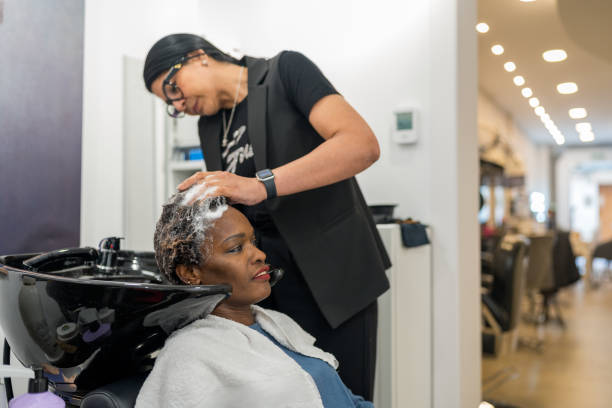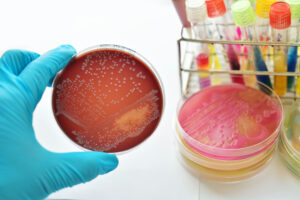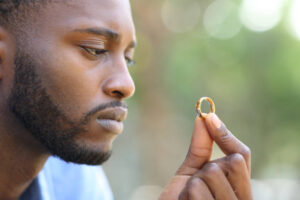Shampoo is a staple in every hair care routine, but how much do we really know about it? Most of us pick a shampoo based on scent, price, or how well it lathers, but there’s more to washing your hair than just bubbles and fragrance. The right shampoo, washing technique, and frequency can make all the difference in your hair’s health and appearance.
Before you reach for that bottle, check out these important tips to make sure you’re getting the most out of your shampoo routine.
1. The Right Choice: One Size Doesn’t Fit All
Choosing the right shampoo isn’t as simple as grabbing whatever is on sale. Every hair type has different needs, and your shampoo should be tailored accordingly.
- Fine or oily hair? Opt for a lightweight, volumizing, or clarifying shampoo to remove excess oil and prevent limpness.
- Thick, coarse, or curly hair? Look for a hydrating shampoo packed with moisture-retaining ingredients like shea butter, coconut oil, or glycerin.
- Color-treated hair? Use a sulfate-free, color-safe shampoo to prevent fading and keep your hue vibrant.
- Sensitive scalp? A gentle, fragrance-free shampoo with soothing ingredients like aloe vera or chamomile is best.
Understanding your hair’s unique needs is the first step to a healthier mane.
2. Let’s Clarify Why You Should Clarify
Have you ever noticed that your favorite shampoo suddenly seems less effective? Some people believe their hair gets “used to” a product, but that’s not the case. The real issue is product buildup.
Between styling creams, leave-in conditioners, and dry shampoo, our hair accumulates residue over time. Hard water minerals, pollution, and even natural oils can create an invisible film on your strands, making hair dull and lifeless.
Enter clarifying shampoo.
A clarifying shampoo deeply cleanses the hair shaft, removing buildup and restoring freshness. However, use it sparingly—about once a month—because overdoing it can strip hair of natural oils, leaving it dry and brittle.
If you use a lot of styling products or swim frequently, you might need to clarify more often. Just be sure to follow up with a deep conditioner to replenish moisture.
RELATED: 6 Common Shampoo Mistakes New Naturals Make

3. Chemically Treated? Handle with Care
If your hair is relaxed, permed, or color-treated, it requires extra attention. Chemically processed hair is more porous, meaning it absorbs and loses moisture faster than untreated hair.
Why does this matter for shampoo?
- Overusing clarifying shampoos on chemically treated hair can accelerate dryness and damage.
- A protein-based shampoo once in a while can strengthen weakened strands.
- A moisturizing shampoo helps maintain elasticity and softness.
Striking the right balance between protein and moisture will keep your chemically treated hair strong, soft, and vibrant.
4. Shampoo Expires—Yes, Really!
We hate to break it to you, but that shampoo bottle you stocked up on years ago? It might not be doing your hair any favors.
Why does shampoo expire?
Over time, shampoo ingredients break down, reducing their effectiveness. While expired shampoo won’t necessarily harm you, it may not cleanse or condition your hair properly.
- Most shampoos last 12 to 18 months after opening.
- If it smells off, has changed color, or has separated, it’s time to toss it.
- Store shampoo in a cool, dry place to extend its shelf life.
If you’re a product junkie, check expiration dates before buying in bulk. No one wants a shelf full of ineffective shampoo!
5. Not Too Much: Less is More
Think drowning your scalp in shampoo will get it cleaner? Think again. Using too much shampoo can lead to excessive lather, making it harder to rinse and stripping your hair of natural oils.
How much is enough?
- Short hair: A dime-sized amount.
- Medium-length hair: A quarter-sized amount.
- Long or thick hair: A half-dollar-sized amount, but focus most of it on the scalp.
Instead of piling on the product, focus on massaging your scalp gently to stimulate circulation and loosen dirt. Let the suds work their way down the strands naturally.
6. Check the Temperature: Hot vs. Cold Water
Water temperature plays a big role in how shampoo interacts with your hair.
- Hot water opens the hair cuticle, making it easier for shampoo to cleanse, but it can also dry out your scalp and fade hair color.
- Warm water is ideal for washing, as it allows shampoo to lather effectively without causing excessive dryness.
- Cold water seals the hair cuticle, locking in moisture and giving hair a smoother, shinier appearance.
For best results, wash your hair with warm water, then finish with a quick cold rinse for added shine.
7. Check The Ingredients: Know What’s In Your Shampoo
Forget about fancy packaging or high-end branding—what really matters is what’s inside your shampoo bottle. Understanding ingredients can help you avoid harsh chemicals and choose the best formula for your hair.
What to watch out for:
- Sulfates (like SLS & SLES): These are harsh detergents that create a rich lather but can strip hair of moisture. If you have dry or color-treated hair, go sulfate-free.
- Silicones: While they can add shine, some silicones (like dimethicone) cause buildup over time, weighing hair down.
- Alcohols: Not all alcohols are bad, but drying alcohols (like isopropyl alcohol) can make hair brittle. Look for fatty alcohols (like cetyl alcohol), which provide moisture.
Instead of focusing on the price tag, pay attention to the ingredients and how they interact with your hair type.
Bonus Tips for a Perfect Wash Routine
- Don’t shampoo daily. Washing too often strips natural oils, leading to dryness or excessive oil production. Aim for two to three times a week or as needed.
- Massage your scalp. A gentle scalp massage boosts blood circulation and encourages healthy hair growth.
- Use a pre-shampoo treatment. If your hair is prone to dryness, applying a little coconut oil or conditioner before shampooing can prevent excessive moisture loss.
- Rotate shampoos. Using a moisturizing shampoo one week and a clarifying shampoo the next can help maintain balance.
Final Thoughts
Shampooing seems simple, but the details matter. Choosing the right formula, using the right amount, and understanding how shampoo interacts with your hair type can transform the health and appearance of your locks.
So next time you wash your hair, don’t just focus on the lather—think about what your hair truly needs. Happy washing!
 Beauty and hair maven Naomi Mackenzie is a freelance writer and business consultant. Her passion is to continuously keep up with the ever evolving techniques and topics as it relates to skin and hair, while helping others to embrace their own definition of beauty in a healthy way. Her blog, KissTheChaos shares both an educated and personal perspective, sought to spark ongoing discussion. Follow her on Instagram at @oOolala_laa and on Facebook.
Beauty and hair maven Naomi Mackenzie is a freelance writer and business consultant. Her passion is to continuously keep up with the ever evolving techniques and topics as it relates to skin and hair, while helping others to embrace their own definition of beauty in a healthy way. Her blog, KissTheChaos shares both an educated and personal perspective, sought to spark ongoing discussion. Follow her on Instagram at @oOolala_laa and on Facebook.
By Naomi Mackenzie





















